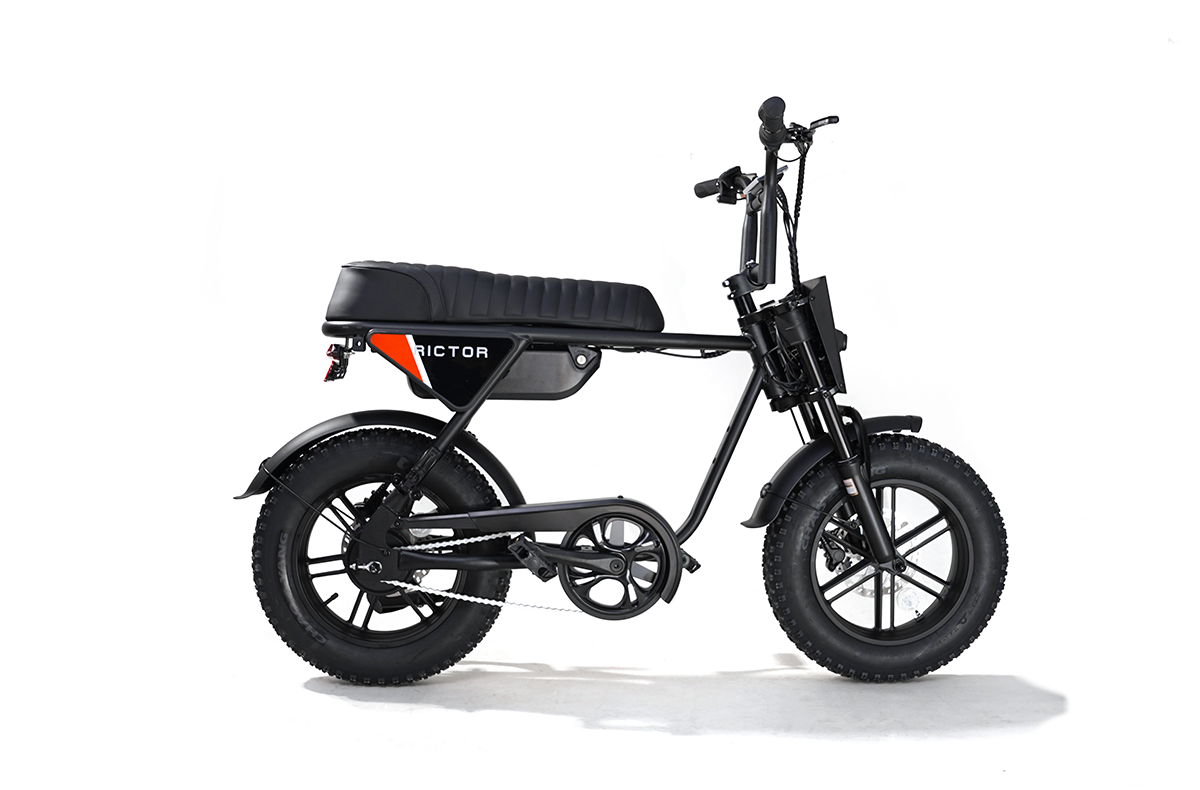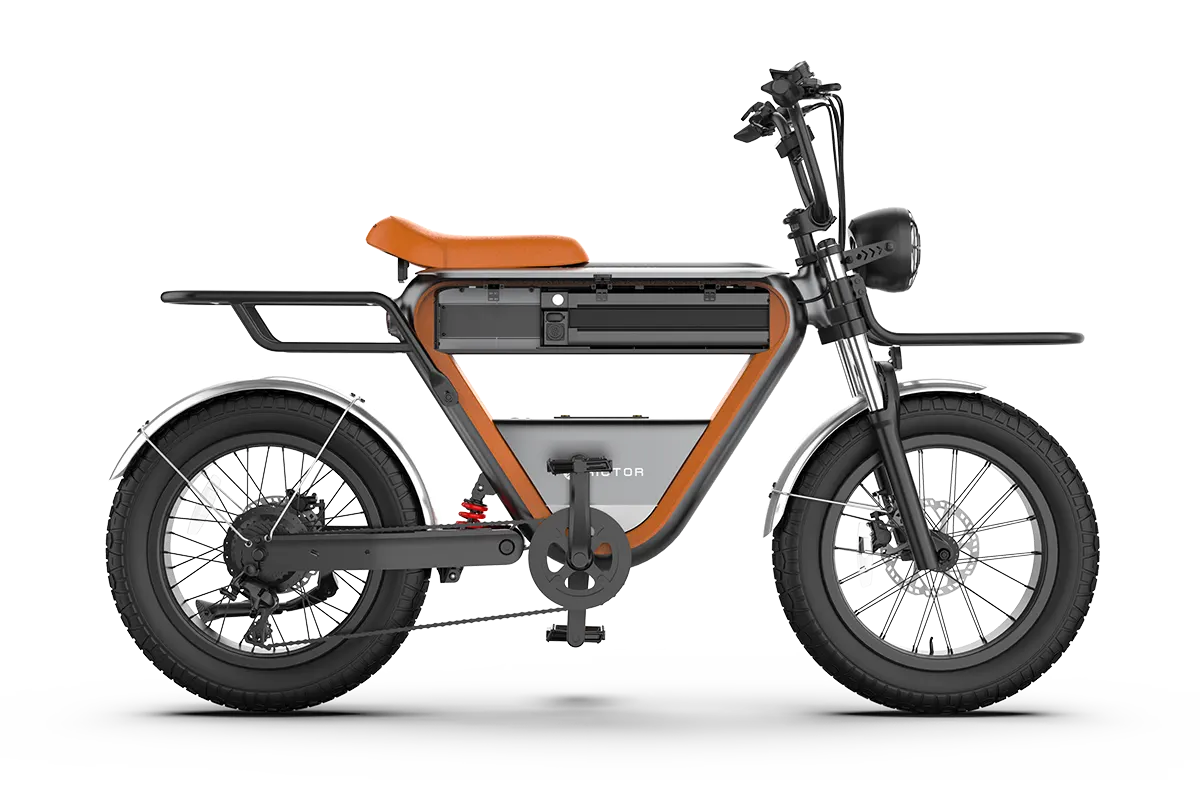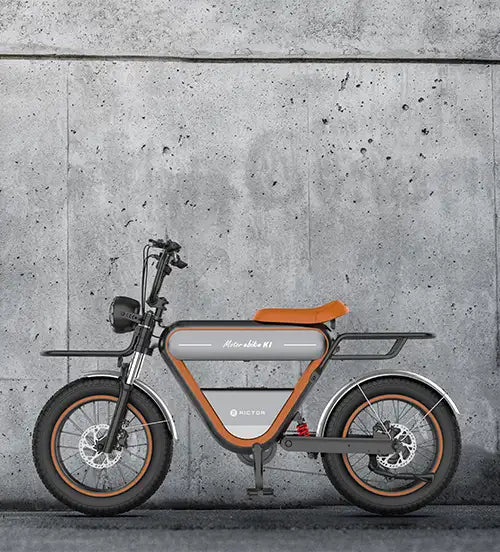
What Ebike Torque Do I Need
What is Torque
Most electric bikes typically have a motor torque ranging between 85 to 90 Nm. But what exactly is torque?
From a physics standpoint, torque is the force that causes rotation. It’s not just a measure of "force," but rather the combination of "force and rotation." In the case of electric bikes, torque refers to the rotational force that the motor applies to the wheels. Simply put, it represents the power the motor uses to accelerate or turn the wheels.
To break it down even further, torque is the force you apply to the pedals to move the bike forward, only in an electric bike, the motor provides that extra push.
When you pedal, the motor assists by adding additional power—this extra power is what we refer to as the motor's torque.
Why is torque so important? It directly affects your riding experience:
-
Acceleration: When you start from a stop, the motor's torque determines how quickly you can get going. A higher torque motor will give you a quicker, more responsive start.
-
Climbing Power: When you ride uphill, the motor has to overcome the resistance of the incline. The higher the torque, the more power the motor can provide, making it easier to climb.
-
Load Handling: If you're carrying heavy cargo or riding in tough conditions, a high-torque motor is better at helping you manage the extra load without losing power.
What Actually Torque Do I Need
Here’s a quick breakdown to help guide your decision:
-
5% incline: 17Nm of torque will do the job.
-
10% incline: You’ll need around 34Nm of torque.
-
15% incline: Aim for about 50Nm of torque.
-
20% incline and steeper: 70Nm or more will be necessary to power through without straining.
Now, if you're like me, you want a bike that can handle a variety of terrains with ease. I’ve been riding the Rictor K1 electric fat bike, which has an 85Nm torque, and it’s more than enough for everyday use, even when the road gets a little steeper.
On my daily rides, whether I’m cruising through the city or tackling moderate hills, the 750W motor offers smooth acceleration and plenty of power. I’ve ridden on hills with a 10-15% incline, and the Rictor K1 doesn’t skip a beat—there’s always enough torque to keep me moving without feeling like I’m pushing too hard.
Even on steeper inclines, the bike performs beautifully, though for some very steep hills (think 20% or more), you might want to consider a bike with higher torque. But for most everyday riders, like me, the 85Nm of torque on the Rictor K1 is perfect.
It balances well with the fat tires, making it comfortable to ride even on rough terrain. I’ve been able to enjoy long rides, with 35 miles of range in electric mode and 70+ miles in pedal assist, without worrying about running out of power or struggling on inclines.
The Rictor K1 has been everything I need in a daily commuter bike—and then some! Whether you're facing a slight incline or a more challenging hill, this bike has got your back.
See Also Rictor K1 All-Terrain Electric Bike: Is it the Ultimate Off-Road Champion of 2024?
How to Calculate the Torque and Power Needed for Hill Climbing
When riding an electric bike uphill, it’s essential to understand how much torque and power are required to overcome gravity and successfully climb the hill. Let’s go through the process step by step with a practical example to calculate these values.
Based on the calculations, here’s a quick summary of the torque needed to climb different hill gradients:
-
5% hill gradient: You’ll need 17 Nm of torque.
-
10% hill gradient: You’ll need 34 Nm of torque.
-
20% hill gradient: You’ll need about 70 Nm of torque.
These torque values are crucial when selecting a motor for your electric bike, as they help determine whether the motor is powerful enough to handle the hills you plan to ride on.
Step 1: Calculate the Tractive Force (Weight Force) Pushing You Downhill
To start, the force needed to climb a hill must overcome the gravitational pull that’s pushing you downhill. This is determined by the weight of the bike and rider, as well as the gradient of the hill. Here are the variables we'll use:
-
Total weight (bike + rider) = 100 kg
-
Gravitational acceleration = 10 N/kg (standard on Earth)
-
Hill gradient = 5% (0.05)
Now, we calculate the weight force, which is the force acting downhill due to gravity:
Weight Force = 100 kg × 10 N/kg × 0.05 = 50 N
This means you need at least 50 Newtons of force to overcome gravity and climb the 5% hill.
Step 2: Calculate the Required Torque at the Rear Wheel
Next, we calculate the torque required at the rear wheel. Assuming you have a 700C wheel with a radius of approximately 0.34 meters, we can use the formula:
Torque (Nm) = Force (N) × Lever arm (m)
Substituting the values, we get:
Torque = 50 N × 0.34 m = 17 Nm
Therefore, to climb a 5% incline, your bike needs 17 Nm of torque at the rear wheel.
Step 3: Consider Different Hill Gradients
For steeper inclines, the required torque increases. Here are some calculations for different gradients:
-
10% gradient: Required torque = 50 N × 0.68 m = 34 Nm
-
20% gradient: Required torque = 50 N × 1.4 m = 70 Nm
As the gradient increases, you need progressively more torque to maintain a steady speed and climb efficiently.
Step 4: Calculate the Power Required to Climb the Hill
Finally, to determine how fast you can climb the hill, we need to calculate the power needed.
Power = Force × Speed
Let’s assume the motor’s power output is 250W. To calculate the speed at which you can climb the hill, divide the motor power by the tractive force:
Speed = Power / Force = 250W / 50N = 5 m/s or 18 km/h
This calculation assumes that air drag does not significantly affect the speed (which is usually the case at speeds below 15 km/h). Therefore, with a 250W motor, you can expect to climb a 5% hill at around 18 km/h.
Hub Motor vs. Mid-Drive Motor
When choosing the right torque for your electric bike, it's important to consider not just the torque value but also the type of motor you're using—whether it's a hub motor or a mid-drive motor.
Hub Motor
A hub motor delivers power directly to the wheel. The torque generated by the motor is essentially the same as the torque at the wheel, making it easier to understand and calculate the required torque. For example, if the motor provides 50 Nm of torque, the rear wheel will also receive that same 50 Nm. However, hub motors have some limitations:
Efficiency at Low Speeds
Direct drive hub motors are generally inefficient at low speeds, especially when climbing hills slowly. They consume more watt-hours than geared hub motors and can burn through battery power quickly when under load.
Cooling and Weight
Direct drive hub motors tend to generate more heat, and although they can be cooled with ferro-fluid (a magnetic fluid used for heat dissipation), they are not as effective as mid-drive motors in terms of cooling. Riders may find the weight of a direct-drive hub motor at the rear to be cumbersome, especially when cranking the bike without power. After using a direct-drive rear hub for about 3 months, many riders, including myself, found it uncomfortable, as it felt like dragging an anchor when pedaling unpowered.
Mid Drive Motor
Mid drive motors are known for their superior cooling and efficiency, especially in uphill or prolonged riding conditions. Here's why:
Better Cooling: Mid-drive motors cool themselves more efficiently compared to geared hub motors. Because they’re mounted at the bike's center of gravity and work through the drivetrain, they are better at distributing heat and keeping the motor cool, even during long uphill climbs or slow slogging.
Climbing Efficiency
Mid-drive motors offer better torque at low speeds, which is perfect for tackling steep inclines or heavy loads. By using the bike’s gears, mid-drive motors can operate more efficiently and make climbing hills less draining on the battery.
Long Distance Riding
The added efficiency and cooling mean mid-drive motors are more suited for long, slow rides, especially on tough terrain. While they might not deliver the same top-end speed as direct-drive hub motors, their ability to maintain consistent power over time makes them a better choice for sustained uphill efforts.
For better performance on steep hills, long climbs, and efficiency over time, a mid-drive motor may be the better choice.
Torque and the Gearing
When riding in hilly terrain, your electric bike's gearing plays a crucial role in how effectively you can climb, accelerate, and manage various gradients. While torque at the motor is important, it’s the torque at the wheel that directly impacts performance. The gearing, including the gears and chainring, influences this torque transfer, and selecting the right setup can make all the difference.
Choosing the Right Gearing for Hill Climbing
When tackling hills, it's essential to choose a gearing system that offers both versatility and durability. A large range of gears is necessary to manage different gradients and maintain a comfortable cadence. Key components to consider include:
Smaller Chainring
Starting with a 36-tooth (36T) chainring is a great option. Smaller chainrings provide easier pedaling, especially when climbing steep hills. This setup reduces the torque demand on the motor, improving overall efficiency and reducing strain on the system.
Wide-Ranging Cassette
Pairing the chainring with an 11-50 cassette (a wide gear range) gives you the flexibility to adjust your gearing for both high-speed cruising and steep hill climbing. This wide range allows you to maintain a consistent cadence, ensuring the motor works efficiently, especially on steep inclines where you need more power.
9 Speed Chains for Durability
9 speed chains are thicker and more robust than 10, 11, or 12-speed chains, making them ideal for handling the extra load and stress from frequent hill climbs. A 9-speed system is more durable and can better withstand the increased wear that comes with tackling steeper gradients and rougher terrain.
FAQs
How does motor torque relate to motor power?
Motor power (measured in watts) and torque are related but represent different things. Power refers to how much work the motor can do over time, while torque measures the force applied at the wheel. A higher-power motor with a lower torque can still be effective, but higher torque is what makes the bike feel responsive, especially for acceleration and hill climbing.
Can I use the same torque for both flat and hilly terrain?
Yes, you can. 85Nm of torque, as seen in bikes like the Rictor K1, is versatile enough for both flat terrain and moderate hills. However, the torque you need will depend on how steep the terrain is. For flatter areas, you may not need as much torque, but it’s always good to have extra power for those unexpected inclines.
Is torque the same as motor power?
No, torque and motor power are different. Torque is the force that helps the bike accelerate or climb hills, while motor power (measured in watts) is the rate at which the motor works over time. Both torque and power are important for performance, but torque specifically helps with acceleration and hill climbing.







